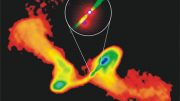
Scientists have identified stable T cell vaccine targets in SARS-CoV-2 using a method developed for HIV.
- Using a method developed for HIV, scientists have identified stable T cell vaccine targets in SARS-CoV-2.
- These stable targets, known as highly networked epitopes, are highly likely to be stable in different variants of the virus.
- The results provide a path forward for a broadly protective COVID-19 T cell vaccine.
HIV is one of the fastest-mutating viruses known to humankind. But HIV’s ability to mutate isn’t unique among RNA viruses — most viruses develop mutations, or changes in their genetic code, over time. If a virus is disease-causing, the right mutation can allow the virus to escape the immune response by changing the viral pieces the immune system uses to recognize the virus as a threat, pieces scientists call epitopes.
To combat HIV’s high rate of mutation, Gaurav Gaiha, MD, DPhil, a member of the Ragon Institute of MGH, MIT, and Harvard and Elizabeth Rossin, MD, PhD, a Retina Fellow at Massachusetts Eye and Ear, a member of Mass General Brigham, developed an approach known as structure-based network analysis. With this, they can identify viral pieces that are constrained, or restricted, from mutation. Changes in mutationally constrained epitopes are rare, as they can cause the virus to lose its ability to infect and replicate, essentially rendering it unable to propagate itself.
When the pandemic began, Gaiha immediately recognized an opportunity to apply the principles of HIV structure-based network analysis to SARS-CoV-2, the virus that causes COVID-19. He and his team reasoned that the virus would likely mutate, potentially in ways that would allow it to escape both natural and vaccine-induced immunity. Using this approach, the team identified mutationally constrained SARS-CoV-2 epitopes that can be recognized by immune cells known as T cells. These epitopes could then be used in a vaccine to train T cells, providing protective immunity. Recently published in Cell, this work highlights the possibility of a T cell vaccine that could offer broad protection against new and emerging variants of SARS-CoV-2 and other SARS-like coronaviruses.
From the earliest stages of the COVID-19 pandemic, the team knew it was imperative to prepare against potential future mutations. Other labs already had published the protein structures (blueprints) of roughly 40% of the SARS-CoV-2 virus, and studies indicated that patients with a robust T cell response, specifically a CD8+ T cell response, were more likely to survive COVID-19 infection.
Gaiha’s team knew these insights could be combined with their unique approach: the network analysis platform to identify mutationally constrained epitopes and an assay they had just developed, a report on which is currently in press at Cell Reports, to identify epitopes that were successfully targeted by CD8+ T cells in HIV-infected individuals. Applying these advances to the SARS-CoV-2 virus, they identified 311 highly networked epitopes in SARS-CoV-2 likely to be both mutationally constrained and recognized by CD8+ T cells.
“These highly networked viral epitopes are connected to many other viral parts, which likely provides a form of stability to the virus,” says Anusha Nathan, a medical student in the Harvard-MIT Health Sciences and Technology program and co–first author of the study. “Therefore, the virus is unlikely to tolerate any structural changes in these highly networked areas, making them resistant to mutations.”
You can think of a virus’s structure like the design of a house, explains Nathan. The stability of a house depends on a few vital elements, like support beams and a foundation, which connect to and support the rest of the house’s structure. It is therefore possible to change the shape or size of features like doors and windows without endangering the house itself. Changes to structural elements, like support beams, however, are far riskier. In biological terms, these support beams would be mutationally constrained — any significant changes to size or shape would risk the structural integrity of the house and could easily lead to its collapse.
Highly networked epitopes in a virus function as support beams, connecting to many other parts of the virus. Mutations in such epitopes can risk the virus’s ability to infect, replicate, and ultimately survive. These highly networked epitopes, therefore, are often identical, or nearly identical, across different viral variants and even across closely related viruses in the same family, making them an ideal vaccine target.
The team studied the identified 311 epitopes to find which were both present in large amounts and likely to be recognized by the vast majority of human immune systems. They ended up with 53 epitopes, each of which represents a potential target for a broadly protective T cell vaccine. Since patients who have recovered from COVID-19 infection have a T cell response, the team was able to verify their work by seeing if their epitopes were the same as the ones that had provoked a T cell response in patients who had recovered from COVID-19. Half of the recovered COVID-19 patients studied had T cell responses to highly networked epitopes identified by the research team. This confirmed that the epitopes identified were capable of inducing an immune reaction, making them promising candidates for use in vaccines.
“A T cell vaccine that effectively targets these highly networked epitopes,” says Rossin, who is also a co–first author of the study, “would potentially be able to provide long-lasting protection against multiple variants of SARS-CoV-2, including future variants.”
By this time, it was February 2021, more than a year into the pandemic, and new variants of concern were showing up across the globe. If the team’s predictions about SARS-CoV-2 were correct, these variants of concerns should have had little to no mutations in the highly networked epitopes they had identified.
The team obtained sequences from the newly circulating B.1.1.7 Alpha, B.1.351 Beta, P1 Gamma, and B.1.617.2 Delta SARS-CoV-2 variants of concern. They compared these sequences with the original SARS-CoV-2 genome, cross-checking the genetic changes against their highly networked epitopes. Remarkably, of all the mutations they identified, only three mutations were found to affect highly networked epitopes sequences, and none of the changes affected the ability of these epitopes to interact with the immune system.
“Initially, it was all prediction,” says Gaiha, an investigator in the MGH Division of Gastroenterology and senior author of the study. “But when we compared our network scores with sequences from the variants of concern and the composite of circulating variants, it was like nature was confirming our predictions.”
During the same time period, mRNA vaccines were being deployed and immune responses to those vaccines were being studied. While the vaccines induce a strong and effective antibody response, Gaiha’s group determined they had a much smaller T cell response against highly networked epitopes compared to patients who had recovered from COVID-19 infections.
While the current vaccines provide strong protection against COVID-19, Gaiha explains, it’s unclear if they will continue to provide equally strong protection as more and more variants of concern begin to circulate. This study, however, shows that it may be possible to develop a broadly protective T cell vaccine that can protect against the variants of concern, such as the Delta variant, and potentially even extend protection to future SARS-CoV-2 variants and similar coronaviruses that may emerge.
Reference: “Structure-guided T cell vaccine design for SARS-CoV-2 variants and sarbecoviruses” by Anusha Nathan, Elizabeth J. Rossin, Clarety Kaseke, Ryan J. Park, Ashok Khatri, Dylan Koundakjian, Jonathan M. Urbach, Nishant K. Singh, Arman Bashirova, Rhoda Tano-Menka, Fernando Senjobe, Michael T. Waring, Alicja Piechocka-Trocha, Wilfredo F. Garcia-Beltran, A. John Iafrate, Vivek Naranbhai, Mary Carrington, Bruce D. Walker, Gaurav D. Gaiha, 29 June 2021, Cell.
DOI: 10.1016/j.cell.2021.06.029
Gaiha is an assistant professor of Medicine at Harvard Medical School. Additional authors include Clarety Kaseke, Ryan J. Park, Dylan Koundakjian, Jonathan M. Urbach, PhD, Nishant K. Singh, PhD, Rhoda Tano-Menka, Fernando Senjobe, Michael T. Waring, Alicja Piechocka-Trocha, PhD, Wilfredo F. Garcia-Beltran, MD, and Bruce D. Walker, MD, from the Ragon Institute; A. John Iafrate, MD, Vivek Naranbhai and Ashok Khatri from MGH; Mary Carrington, PhD, of NIH; and Arman Bashirova, NCI.
This study was supported by the National Institutes of Health and the Massachusetts Consortium of Pathogen Readiness (MassCPR). Additional support was provided by the Howard Hughes Medical Institute, the Ragon Institute, the Mark and Lisa Schwartz Foundation and Enid Schwartz (B.D.W.), and Sandy and Paul Edgerly. Roider is supported by the Heed Ophthalmic Foundation. Gaiha is supported by the Bill and Melinda Gates Foundation, a Burroughs Wellcome Career Award for Medical Scientists and the Gilead HIV Research Scholars Program. This project has been funded in whole or in part with federal funds from the Frederick National Laboratory for Cancer Research.
Conflicts of interest: Roider and Gaiha have filed patent application PCT/US2021/028245.









Be the first to comment on "Potential Path Discovered to a Broadly Protective COVID-19 Vaccine Using T Cells"